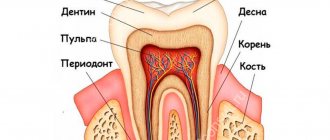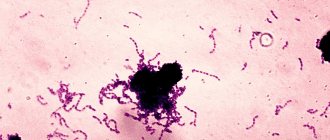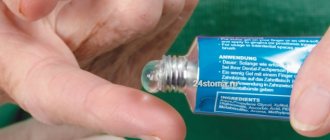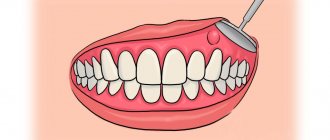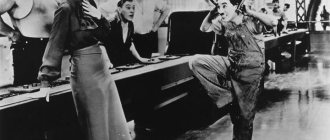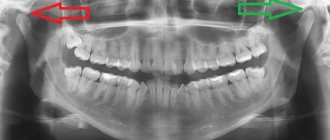There are many different ways to reduce pain associated with musculoskeletal problems. For example, back pain is often treated through massage, stretching, a variety of exercises, etc. What methods are worth trying?
Of course, you should seek advice from a specialist, but chances are they will prescribe one treatment option without telling you about other options that may also be well supported by research.
Some people will find that deadlifting reduces their back pain, while others will have the complete opposite experience. The same will be true for running or doing yoga. Unfortunately, you can't say for sure which option will be effective in your case, so you may have to go through trial and error. However, you cannot try everything, as some options are pure quackery.
Friends, on December 19-20, a seminar “Explaining Pain” will take place in Moscow. Find out more...
In this post, we will discuss several ways to reduce pain. These include:
- Rest.
- Power training.
- Improving mobility (stretching, exercises to improve joint mobility).
- Coordination/motor control exercises (corrective exercises, Pilates).
- Mindfulness exercises (meditation, yoga, Feldenkrais method).
- Improving general health (nutrition, adherence to work and rest, healthy sleep).
- Manual therapy (massage, mobilization, manipulation).
Each of the above methods can be effective even in the absence of a specific diagnosis. In this sense, they can be compared to broad-spectrum drugs. In some cases, you don't even need a specialist, especially if you know the basic principles. Below is a brief description of each approach, with its advantages and features.
Rest
If your Achilles tendon begins to hurt after a few weeks of intense running, you can assume that the underlying cause of the pain is excess mechanical stress. Therefore, rest is a logical option to solve the problem (especially in the first stages). Most people understand this well, but some neglect this simple rule.
And that's why:
- This may be due to the fact that some people simply do not like to rest. Of course, by pushing themselves regardless of their condition, they can harm themselves.
- Another reason is the inability to notice that the load has become excessive. Obviously, 5km a week is more than nothing, but the transition from 10km to 15km may be less noticeable. Increased physical stress is even more difficult to notice when it is associated with other activities. For example, adding two low-intensity workouts to your weekly running program may require reducing your overall running volume.
- The most difficult thing to notice is the additional “load” in the form of emotional stress, which has a real physical effect on the body, an example of which may be an increase in pain sensitivity. So your back can easily handle 20km of running a week when you're not under any emotional stress, but it starts to hurt when you're stuck at work or don't get enough sleep.
To make sure you're giving your body enough opportunity to recover, pay attention to the following things.
- If an activity causes pain, don't do it (at least for a while) or do it to a lesser extent.
- Avoid overtraining and manage your training load. This may require some expert level knowledge, for example if you are an athlete.
- Try to reduce emotional stress.
- Optimize your sleep and recovery.
Note
- Taking a lot of rest is not always a good thing.
- If you've rested long enough to recover, then it's probably time to move on to a more active phase of treatment.
Acute pain after a fall or injury
A lower back bruise after a fall or blow is the most common back injury, from which even the most careful and cautious people are not immune. The high-risk group includes athletes, people engaged in heavy physical labor (loaders, storekeepers), and children. You can also get a lower back injury if you fall on slippery surfaces (wet floors, ice) or in public transport during emergency braking.
No one is safe from accidental falls
Before providing assistance to a bruised victim, you must ensure that there are no fractures or dislocations. The difference between a bruise and a fracture is damage only to soft tissues (skin, musculo-ligamentous apparatus), manifested mainly by swelling, hematomas and bruises (a symptom of damage to capillaries and small blood vessels).
Power training
Of the various strategies listed here, strength training is by far the one that most patients are least inclined to try. However, this method is effective for a wide range of diseases of the musculoskeletal system.
For example, the best treatment for Achilles tendinopathy is relatively simple—gradually increasing the load on the calf muscles through resistance exercises. For several types of knee pain, quadriceps strengthening is the most evidence-based treatment. Adding strength training to other lower extremity muscles can help even more. The same is true for the lower back, cervical and shoulder joints.
You can read about what pain is here.
The bottom line is that for many types of musculoskeletal pain, you won't find a treatment that works better, on average, than simply strengthening the muscles around the painful area to avoid worsening symptoms. This simple approach is sometimes called “just load it” and is advocated by many respected physical therapists.
Why does this work? We can't be sure, but it may involve one or more mechanisms:
- Exercise-induced analgesia through activation of endogenous endocannabinoid and/or opioid systems.
- Physiological changes such as reactivation of tissue healing, improvement of metabolic or vascular support of tissues, or reduction of inflammation.
- Mechanical changes, such as increased ability to use good technique, absorb force, and/or stabilize joints.
- Psychological changes such as the placebo effect, increased optimism and a sense of self-efficacy.
For best results, you should consult with a professional, especially a physical therapist who knows how to exercise with pain. The process doesn't have to be extremely complicated, and you can figure it out on your own if you understand the basic principles of resistance training. The goal is to increase strength without increasing pain. One tool is isometric exercises, which involve tensing your muscles without shortening them, much like pushing against a wall as hard as you can. Simply find the joint angle that gives you the greatest muscle tension to discomfort ratio and work until you get tired.
To ensure that the exercise does not aggravate your pain, it is recommended to avoid pain levels above moderate discomfort (up to 4 on a scale of one to ten). Also, make sure your pain doesn't get worse immediately after doing the exercise or the next day. There's a good chance you'll feel better almost immediately because... intense muscle tension is a good way to induce exercise-related analgesia.
Even if you manage to strengthen your muscles, but the pain does not decrease, then look at it positively, because you will still function better.
Note
- There are no magic muscles (like the glutes or transverse abdominis) that need special attention, and there are no “bad” muscles (like the quads or pecs) that shouldn't be strengthened.
- There is no one training method (e.g., kettlebells, barbells, machines) that is significantly superior to others. Focus on the basic principles, such as progressive overload, and use whatever method makes the most sense for your situation.
- A common mistake is simply not working hard enough. Make sure you really challenge your ability to generate force - work hard to get close to your safe limit or get well tired.
How to cope with symptoms?
Symptomatic treatment of acute lower back pain includes medications and traditional methods aimed at reducing pain and restoring sufficient mobility in the lumbar region. The use of pain-relieving ointments, creams, tablets, as well as alternative medicine recipes allows you to get rid of lumbago in the back, pain when bending and turning, and muscle stiffness, which almost always occurs simultaneously with painful sensations.
Medicines (tablets)
Analgesic drugs are the main pharmacological group of drugs that are used to eliminate symptoms of severe and acute lower back pain. For shooting pains (lumbago), the most effective is Analgin (metamizole sodium). To reduce the intensity of pain, it is prescribed 1 tablet 2-3 times a day for 3-5 days.
"Analgin"
When prescribing drugs based on metamizole sodium, it is necessary to take into account the degree of their toxicity, therefore “Analgin” and its analogues (for example, “Baralgin”) are not recommended in the period after infectious diseases, as well as for persons with weakened immune systems, including pregnant and lactating women women.
"Baralgin"
If lower back pain is combined with an inflammatory process, non-steroidal anti-inflammatory drugs are used to relieve it. The most effective drugs from the NSAID group, as well as their dosages, are shown in the table below.
NSAIDs for acute back and lower back pain
| Name (active substance) | Daily dosage | Maximum duration of use (unless otherwise prescribed by a doctor) |
| 400-800 mg up to 2-3 times a day. | 5 days. |
| 10 mg up to 4 times a day. | 5-7 days. |
| 100 mg 2 times a day. | 10 days. |
| 7.5 mg (1 tablet) per day. | 5-10 days. |
| 50 mg 2-3 times a day. | 3-7 days. |
Note! Paracetamol, although not classified as an NSAID, also has a fairly pronounced analgesic effect. It is better to take it in combination with ibuprofen (Ibuklin) 1 to 3 times a day.
"Ibuklin"
Ointments and gels
It is almost impossible to relieve acute pain in the lumbar region with ointments alone, therefore, during the first 2-3 days, local dosage forms are recommended to be combined with tablets or injections. Ointments based on diclofenac and ketorolac have a pronounced analgesic effect: they should be applied to the sore spot 2-4 times a day for 7-10 days in a row (even if the pain stopped a few days after the onset of the attack).
Acute pain caused by radiculitis can also be reduced with the help of warming ointments (Capsicam, Finalgon) and products containing camphor oil or camphor alcohol, as well as bee or snake venom.
"Capsicam", "Finalgon")
Below is a list of well-proven topical medications that will help you quickly get rid of back pain and restore the mobility of the damaged spinal segment.
Improved motor control
Physical therapists often seek to correct "dysfunctional" movement patterns. However, this is not entirely clear, for example, some studies show that exercises to improve motor control do reduce pain, but the interesting thing is that this can happen even in the absence of improvement in motor control. Additionally, most of our ideas about what movements are dysfunctional are guesswork and do not fully reflect the complexity and variability of human movement.
Mind and body
Pain is more than just tissue damage. This is a reflection of how the nervous system and unconscious parts of the brain perceive processes occurring in the body (and beyond). This is especially true when the pain is chronic, correlated with other perceptual disturbances, and appears to be due to psychosocial rather than structural problems. There are many different mind/body practices that focus on improving body awareness through increased awareness and focused attention. Some of them, studies show, actually reduce pain.
If you are interested in this area, consider one of the following treatments for chronic pain:
- Meditation.
- Mindfulness-based stress reduction.
- Yoga.
- Dancing.
- Feldenkrais method.
- Martial arts (especially tai chi or qigong).
Note
- Don’t think that the pain is “in your head” and that the body doesn’t really matter, etc.
- The mind/body method is not a cure for pain, but rather it can be seen as a valuable tool for reducing it.
Improved overall health
Anything you can do to improve your overall health can help with musculoskeletal pain, especially when the pain is chronic and comorbid with other chronic diseases such as obesity or autoimmune diseases.
In this case, working to improve your overall health may be the best way to manage your pain. This means eating a balanced diet, maintaining a work-rest schedule, walking outdoors, aerobic exercise, minimizing emotional stress, and getting good sleep.
Note
Make sure your interest in healthy living doesn't turn into unhealthy behavior.
Manual therapy
There is evidence that manual therapy helps with musculoskeletal pain in the short term. Yes, this is true, but there are some nuances.
First, recognize that manual therapy works by modulating the nervous system's sensitivity to pain, not by "fixing" tissue problems such as malaligned vertebrae, fascial adhesions, etc. If you feel better after chiropractic therapy, know that the neurophysiological mechanisms that explain its effectiveness are not much different from what makes most people feel good after strength training or aerobic exercise, which shows good results in the long term.
On the other hand, there is no doubt that for some people, skillful and sensitive human touch represents something unique. If you respond well to what Diane Jacobs calls “human primate social grooming,” then of course you will prefer manual therapy. But don't think that this is necessary to "fix" some problem in your body, like a mechanic fixing a car.
Sexually transmitted infections
Characteristic signs of sexually transmitted infections (STIs): pain during urination, vaginal discharge, vaginal bleeding between periods. The most common types of STIs are gonorrhea and chlamydia. The final diagnosis can be made by a doctor after laboratory tests. If you are diagnosed with a sexually transmitted disease, your partner should also be tested.

